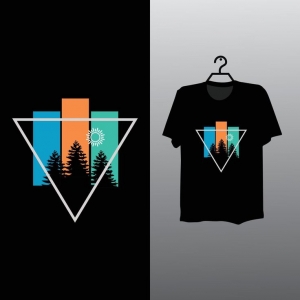Animation is the art of giving life to drawings and designs, and few techniques demonstrate this better than the walk cycle animation. A simple walk can reveal a character’s mood, personality, and style. In 2025, animators—from beginners to professionals—continue to refine this fundamental skill while taking advantage of new tools and workflows.
Whether you’re creating a short film, a YouTube intro, or quick animatedvideos for marketing, a smooth and expressive walk cycle is key to producing engaging content. With modern techniques like tweening animation, animators now have faster and more efficient ways to create lifelike motion while maintaining the artistry that makes characters memorable.
What is a Walk Cycle Animation?
A walk cycle animation is a looping sequence of frames that shows a character walking. Instead of redrawing each step from scratch, animators create a repeating cycle, which saves time and ensures consistency.
The typical walk cycle includes:
Contact Pose – One foot touches the ground while the other prepares to lift.
Passing Pose – The lifted leg passes the grounded leg.
Down Pose – The character’s body lowers as weight shifts to the front leg.
Up Pose – The character’s body rises as the back leg pushes off.
These four poses form the foundation, and by tweaking them, animators can express emotion—whether it’s a confident stride, a lazy shuffle, or a sneaky tiptoe.
Why Walk Cycle Animation Still Matters in 2025
In the age of AI-assisted animation, why should animators still study the walk cycle? The answer is simple: walk cycles are storytelling tools.
Character Identity: A hero’s confident walk differs from a villain’s lurking stride.
Efficiency: A reusable walk cycle saves hours of work across episodes, games, or animatedvideos.
Visual Appeal: Audiences notice awkward movement immediately. A well-designed cycle keeps characters believable.
Brand Personality: For businesses using mascots in marketing, a signature walk can make the brand more memorable.
Whether for films, ads, or social media, walk cycles remain one of the most versatile and essential animations.
Walk Cycle and Tweening Animation
Traditionally, animators drew each frame by hand—a time-consuming process. Today, tweening animation has revolutionized this workflow.
What is Tweening Animation?
Tweening (short for in-betweening) is the process of generating frames between two key poses. Instead of drawing every frame manually, animators set the important positions, and software automatically fills the in-betweens.
Benefits for Walk Cycles:
Smooth Motion: Transitions between contact, passing, and up/down poses look fluid.
Time-Saving: Ideal for repetitive actions like walking.
Easy Adjustments: Changing speed, stride length, or posture is much faster.
Scalability: Perfect for mass-producing walk cycles in animatedvideos or gaming projects.
Modern tools like Toon Boom Harmony, Adobe Animate, and Blender use advanced tweening features, making walk cycle creation faster while maintaining artistic control.
Types of Walk Cycle Animations
Not all walks are created equal. The beauty of the walk cycle lies in how it reflects emotion, tone, and personality. Here are some popular variations:
Normal Walk Cycle
Balanced and neutral. Suitable for everyday characters or background NPCs in games.
Balanced and neutral. Suitable for everyday characters or background NPCs in games.
Happy Walk Cycle
Features bouncy movements, raised posture, and quicker pacing. Great for playful or optimistic characters in animatedvideos.
Features bouncy movements, raised posture, and quicker pacing. Great for playful or optimistic characters in animatedvideos.
Sad Walk Cycle
Includes slouched posture, slow pacing, and dragging feet. Communicates sorrow or defeat.
Includes slouched posture, slow pacing, and dragging feet. Communicates sorrow or defeat.
Angry Walk Cycle
Character stomps with strong down poses, clenched fists, and fast pacing. Perfect for villains or intense moments.
Character stomps with strong down poses, clenched fists, and fast pacing. Perfect for villains or intense moments.
Stylized/Exaggerated Walk Cycle
Used in cartoons or comedy. Exaggeration emphasizes personality traits—like long-legged strides or bouncy hops.
Used in cartoons or comedy. Exaggeration emphasizes personality traits—like long-legged strides or bouncy hops.
By combining tweening animation with artistic exaggeration, animators can quickly produce unique walks tailored to each project.
Walk Cycle in AnimatedVideos
Walk cycles aren’t just for films or games. They play an important role in animatedvideos for marketing, education, and branding.
Explainer Videos: A mascot walking onto the screen feels dynamic compared to appearing statically.
Product Demos: A walking character can guide viewers through features step by step.
Social Media Content: Short looping walk cycles add energy and engagement to Instagram reels, TikToks, or YouTube shorts.
Corporate Branding: A signature walk cycle for a brand mascot makes advertising campaigns consistent and memorable.
For businesses, even a simple character walking across the screen can humanize the message and increase viewer engagement.
Tips for Mastering Walk Cycle Animation
If you’re ready to learn how to animate a walk cycle, here are some expert tips to keep in mind:
Study Real Life – Watch how people walk. Notice differences in speed, posture, and energy.
Start with Key Poses – Define contact, passing, down, and up poses before worrying about in-betweens.
Use Tweening Animation Wisely – Let software handle repetitive movements, but refine the motion for personality.
Focus on Timing – Walk cycles typically last 12–24 frames per step. Adjust timing for emotion (slower for sad walks, faster for happy or angry).
Work with Silhouettes – Ensure the character’s walk is clear even without details. This improves readability.
Add Secondary Motion – Hair, clothing, or accessories should move naturally with the walk.
Loop Smoothly – Ensure the first and last frames connect seamlessly for endless playback.
Future of Walk Cycle Animation in 2025
Technology continues to evolve, and so does the way we create walk cycles. Some exciting trends include:
AI-Assisted Walk Cycles: AI can now auto-generate walk cycles from text prompts (“happy walk” or “sneaky walk”).
Motion Capture Integration: Affordable mocap suits let creators capture realistic walks and refine them in software.
Hybrid Techniques: Combining hand-drawn artistry with tweening animation for unique, stylized results.
Interactive Walk Cycles: Used in AR/VR, allowing characters to walk dynamically in user-driven environments.
Despite these advancements, the fundamentals remain the same: clear poses, strong timing, and expressive design.
Final Thoughts
The walk cycle animation may seem simple, but it’s one of the most powerful tools in an animator’s toolkit. From establishing personality through posture to creating seamless loops for animatedvideos, walk cycles remain at the core of character animation.
In 2025, tools like tweening animation make the process faster and more accessible, but the artistry lies in how you bring emotion and personality into every step. Whether you’re creating a cheerful mascot for a brand or animating a dramatic film character, mastering walk cycles will elevate your work and make your characters unforgettable.
So the next time you want to breathe life into your design, start with the basics: a simple walk. After all, every great journey in animation begins with a single step.






